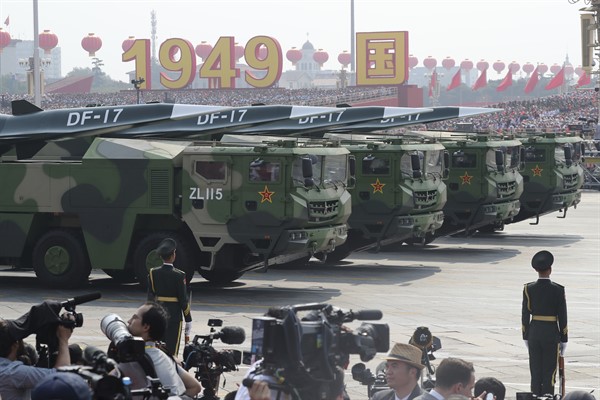In a move that many observers have likened to the opening scene of a techno-thriller or science fiction novel, China reportedly tested an advanced hypersonic missile in August. Technically known as a Gliding Fractional Orbital Bombardment System, or G-FOBS, the weapon is said to have missed its target by about two dozen miles, according to the Financial Times. It nonetheless represents a significant advance in China’s capabilities and could negatively affect regional stability by spurring an arms race in the Asia-Pacific.
The purpose of FOBS is to place a large payload—usually a nuclear warhead—into a low-Earth orbit, allowing it to then attack targets from space. The Chinese test apparently took U.S. intelligence agencies by surprise. Some commentators have even referred to it as a “Sputnik moment” for Washington.
For all the breathless commentary around this test, however, FOBS capabilities are not new. The systems were first developed during the 1960s in the USSR by the Soviet rocket engineer Sergei Korolev, and were deployed in the 1970s. For Moscow, FOBS had several important advantages: a virtually unlimited range, the capacity to conceal the weapon in orbit after separation of the launch vehicle, and the ability to evade missile defense systems.

